
About this Release
Catalogue No.: GP946
Release Date: July 2024
Barcode: 747313994618
Composer(s): Aram Il'yich Khachaturian
Artist(s): Mikael Ayrapetyan
Link(s):
KHACHATURIAN, ARAM IL’YICH (1903–1978)
Piano Transcriptions
- Mikael Ayrapetyan, piano
Aram Khachaturian was devoted to ballet music and produced two masterpieces of the genre – Spartacus and Gayane. Distinguished by indelible thematic beauty of which the ‘Adagio of Spartacus and Phrygia’ is a perfect example, the ballets are symphonic in conception and, in the case of Gayane, marked by the use of leitmotifs. The Masquerade Suite is a richly contrasted theatre score. These sensitive piano arrangements preserve the very essence of Khachaturian’s music, maintaining the texture and clarity of the original orchestral scores. Mikael Ayrapetyan is the world’s leading exponent of Armenian piano music and his Grand Piano recordings of music from his homeland have been met with universal admiration.
Tracklist
|
Gayane (arr. A. Tseitlin for piano) (excerpts) (1942) (00:20:00 )
|
|
1
Gayane: Lezginka (Dance of Young Men) (arr. A. Tseitlin for piano) (00:02:34)
|
|
2
Gayane: Uzundara (Dance of Nuneh and the Girls) and Gayane's Dance (arr. A. Tseitlin for piano) (00:03:46)
|
|
6
Gayane: Dance of Nuneh and Karen (arr. A. Tseitlin for piano) (00:02:02)
|
|
7
Gayane: Shalakho (Lad's Dance) (arr. A. Tseitlin for piano) (00:02:19)
|
|
Gayane (arr. V. Sargsyan for piano) (excerpts) (1942) (00:20:00 )
|
|
3
Gayane: Dance of the Maidens (arr. V. Sargsyan for piano) (00:02:48)
|
|
4
Gayane: Lullaby (arr. V. Sargsyan for piano) (00:03:46)
|
|
5
Gayane: Aisha's Dance (arr. V. Sargsyan for piano) (00:03:38)
|
|
8
Gayane: Dance of the Girls with Tambourines (arr. V. Sargsyan for piano) (00:02:59)
|
|
9
Gayane: Sabre Dance (arr. V. Sargsyan for piano) (00:02:12)
|
|
Spartacus (arr. E. Khachaturian for piano) (1954) (00:20:00 )
|
|
11
Spartacus: Dance of the Egyptian Girl (arr. E. Khachaturian for piano) (00:03:29)
|
|
12
Spartacus: Dance of the Roman Courtesans (arr. E. Khachaturian for piano) (00:03:26)
|
|
14
Spartacus: Scene and Dance with Crotales (arr. E. Khachaturian for piano) (00:03:29)
|
|
15
Spartacus: Aegina's Variation and Final Bacchanal (arr. E. Khachaturian for piano) (00:03:19)
|
|
Spartacus (arr. V. Sargsyan for piano) (excerpts) (1954) (00:20:00 )
|
|
10
Spartacus: Dance of the Nymphs (arr. V. Sargsyan for piano) (00:03:30)
|
|
13
Spartacus: Sword Dance of the Young Thracians (arr. V. Sargsyan for piano) (00:02:17)
|
|
16
Spartacus: Adagio of Spartacus and Phrygia (arr. V. Sargsyan for piano) (00:08:37)
|
|
Masquerade Suite (arr. A. Dolukhanian for piano) (1941) (00:16:00 )
|
|
17
I. Waltz (00:03:33)
|
|
18
II. Nocturne (00:03:16)
|
|
19
III. Mazurka (00:02:24)
|
|
20
IV. Romance (00:02:59)
|
|
21
V. Galop (00:02:57)
|
Total Time: 01:09:20
The Artist(s)
 Mikael Ayrapetyan is a pianist, composer, producer and teacher, as well as a researcher and public figure. He has done much to popularise Armenian classical music all over the world with his Secrets of Armenia musical project, which began during his studies at the Moscow Conservatory. Born in 1984 in Yerevan, Armenia, he studied at the Moscow Tchaikovsky State Conservatory, and continues to uphold the performing traditions of the Russian piano school, of which Konstantin Igumnov, Samuel Feinberg and Lev Oborin are luminaries. His repertoire ranges from the Baroque to the contemporary and includes rarely performed works by Armenian composers. This period was the start of his extensive concert activity in which he performs works by Tigranian, Chukhadjian, Komitas, Melikian, Spendiarian, Barkhudarian, Stepanian, Khachaturian, Babajanian, Arutyunian, Abrahamian, Bagdasarian, Avetisian, Mirzoyan, Amirkhanian and many other Armenian composers, which eventually led him to produce his own concerts. He was awarded the State Prize of the Republic of Armenia for his outstanding contribution to the development and popularisation of Armenian classical music.
Mikael Ayrapetyan is a pianist, composer, producer and teacher, as well as a researcher and public figure. He has done much to popularise Armenian classical music all over the world with his Secrets of Armenia musical project, which began during his studies at the Moscow Conservatory. Born in 1984 in Yerevan, Armenia, he studied at the Moscow Tchaikovsky State Conservatory, and continues to uphold the performing traditions of the Russian piano school, of which Konstantin Igumnov, Samuel Feinberg and Lev Oborin are luminaries. His repertoire ranges from the Baroque to the contemporary and includes rarely performed works by Armenian composers. This period was the start of his extensive concert activity in which he performs works by Tigranian, Chukhadjian, Komitas, Melikian, Spendiarian, Barkhudarian, Stepanian, Khachaturian, Babajanian, Arutyunian, Abrahamian, Bagdasarian, Avetisian, Mirzoyan, Amirkhanian and many other Armenian composers, which eventually led him to produce his own concerts. He was awarded the State Prize of the Republic of Armenia for his outstanding contribution to the development and popularisation of Armenian classical music. The Composer(s)
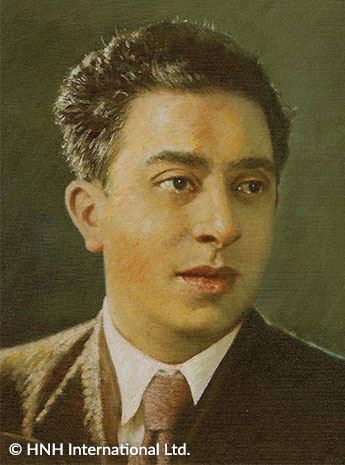 Although Khachaturian was a relatively late starter as a composer, the majority of his works date from the earlier half of his career. These include three symphonies (1934, 1943 and 1947), concertos for piano, violin and cello (1936, 1940 and 1946), and the ballets Gayaneh (1942) and Spartacus (1954). Thereafter his conducting and administration duties left much less time for composition, though mention ought to be made of the Concerto-Rhapsodies for violin, for cello and for piano (1961, 1963 and 1968), as well as unaccompanied sonatas for cello, violin and viola (1974–6) that marked a belated return to chamber music. He also left a number of piano works, along with numerous scores for theatre and cinema—the suites of which, along with those from his ballets, kept his name alive in the concert hall despite the absence of larger symphonic works. Not in doubt is the expressive immediacy of his music, with its sensuous yet direct melodic writing, highly resourceful orchestration and elemental rhythmic drive—resulting in a popularity equalled by very few composers of his generation.
Although Khachaturian was a relatively late starter as a composer, the majority of his works date from the earlier half of his career. These include three symphonies (1934, 1943 and 1947), concertos for piano, violin and cello (1936, 1940 and 1946), and the ballets Gayaneh (1942) and Spartacus (1954). Thereafter his conducting and administration duties left much less time for composition, though mention ought to be made of the Concerto-Rhapsodies for violin, for cello and for piano (1961, 1963 and 1968), as well as unaccompanied sonatas for cello, violin and viola (1974–6) that marked a belated return to chamber music. He also left a number of piano works, along with numerous scores for theatre and cinema—the suites of which, along with those from his ballets, kept his name alive in the concert hall despite the absence of larger symphonic works. Not in doubt is the expressive immediacy of his music, with its sensuous yet direct melodic writing, highly resourceful orchestration and elemental rhythmic drive—resulting in a popularity equalled by very few composers of his generation. 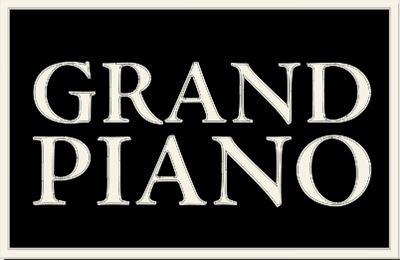
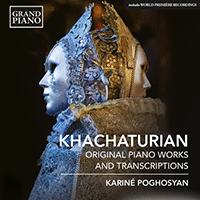
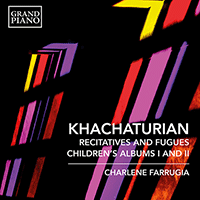
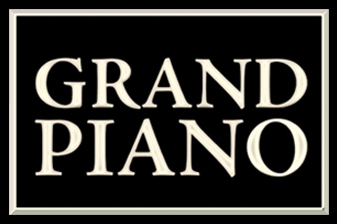 Grand Piano has gained a reputation for producing high quality recordings of rare keyboard gems. Dedicated to the exploration of undiscovered piano repertoire, the label specialises in complete cycles of piano works by many lesser-known composers, whose output might otherwise have remained unknown and unrecorded.
Grand Piano has gained a reputation for producing high quality recordings of rare keyboard gems. Dedicated to the exploration of undiscovered piano repertoire, the label specialises in complete cycles of piano works by many lesser-known composers, whose output might otherwise have remained unknown and unrecorded.






